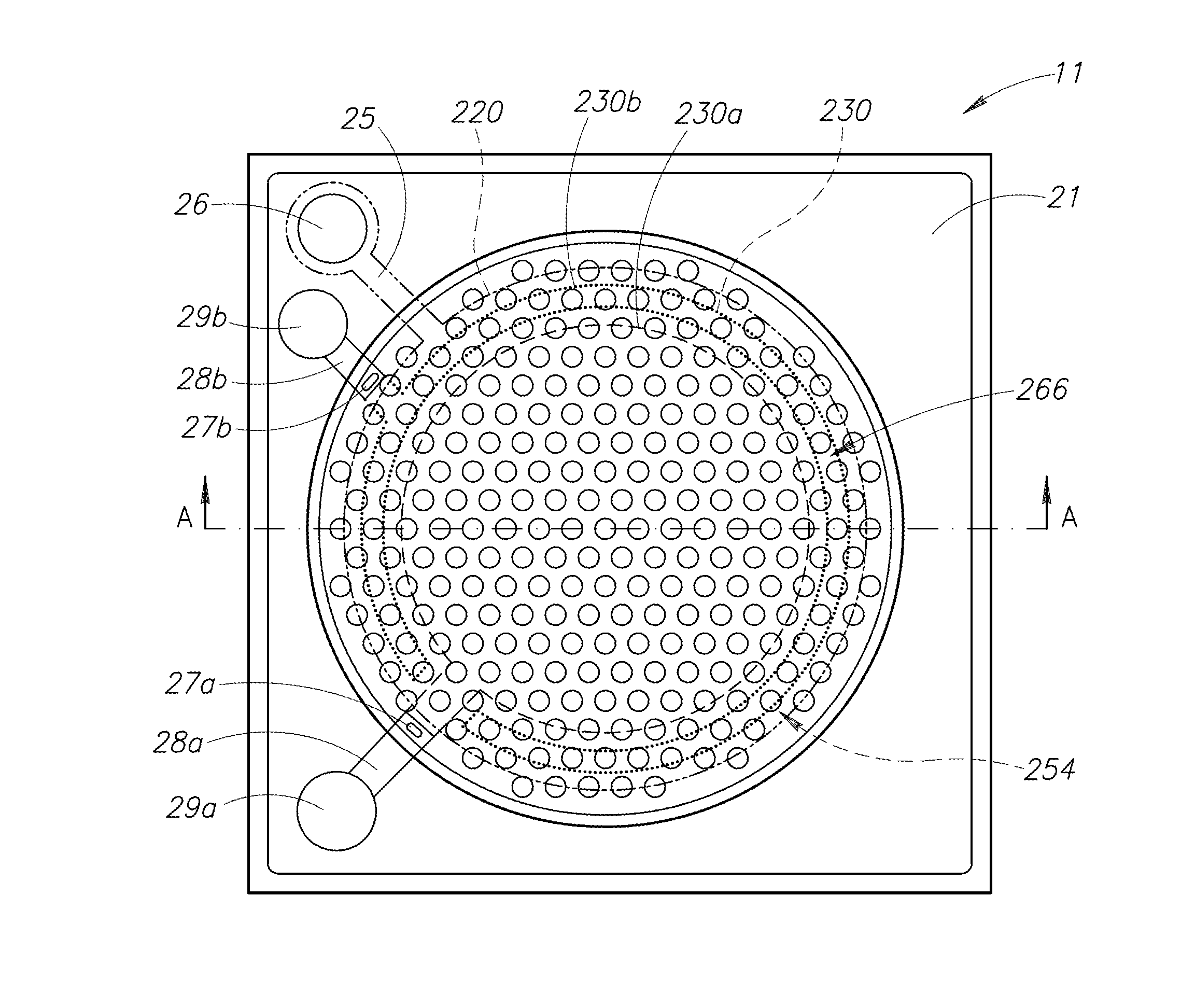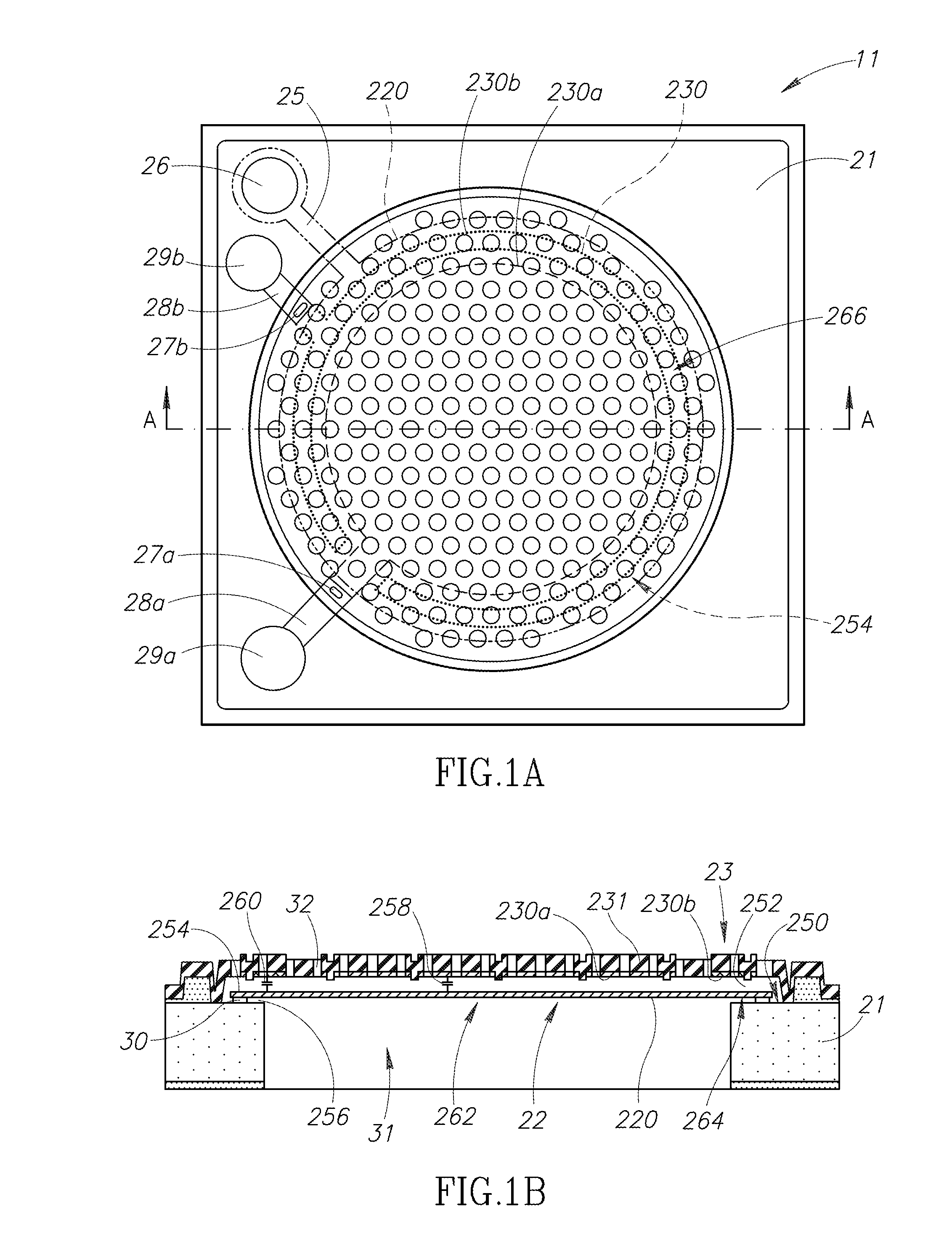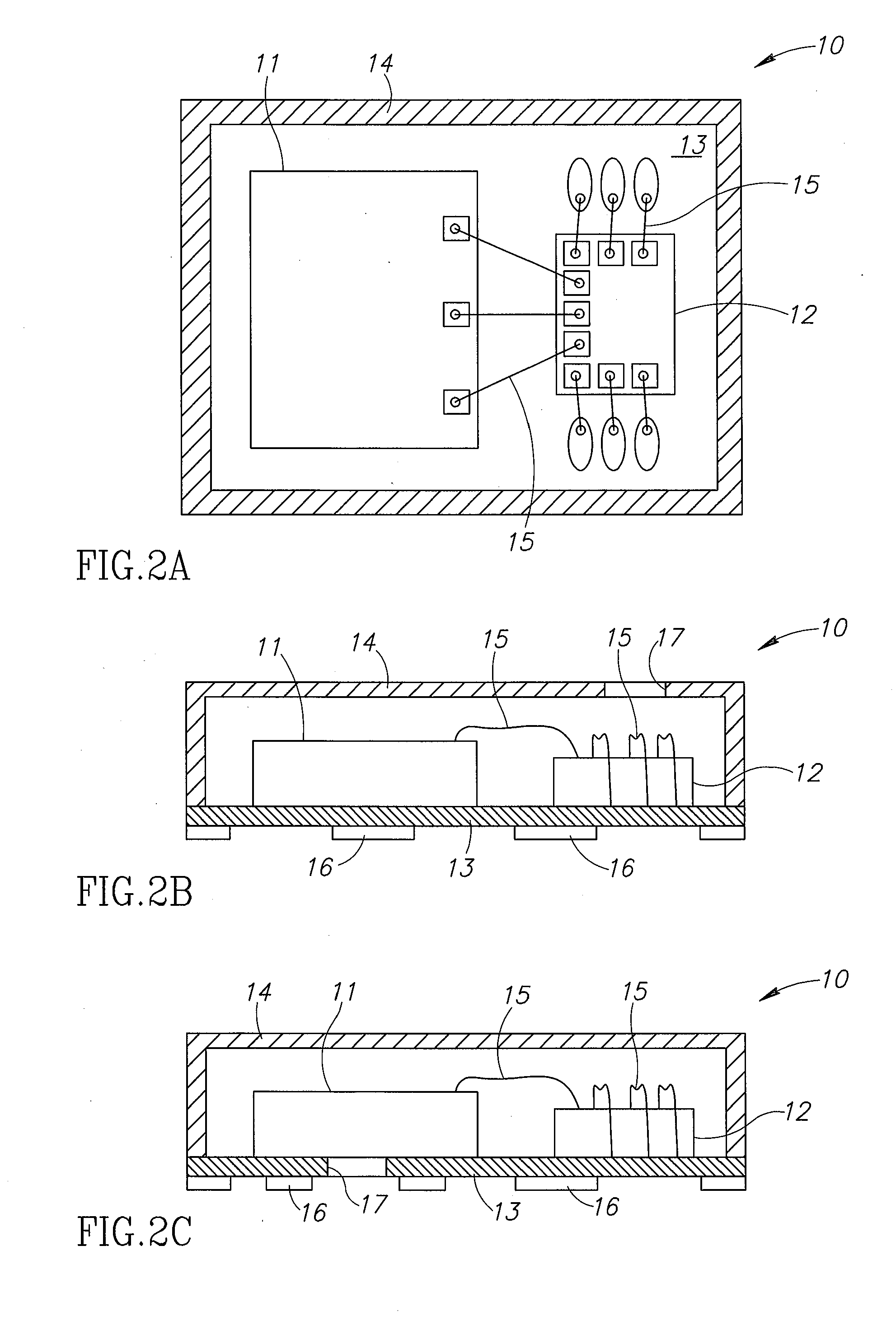Acoustic transducer and interface circuit
a transducer and interface circuit technology, applied in the field of acoustic transducers, can solve the problems of deterioration of sound quality, difficulty for low-sensitivity microphones to detect small sound with high quality, mismatching of acoustic characteristics, etc., and achieve the effect of reducing the variation between chips
- Summary
- Abstract
- Description
- Claims
- Application Information
AI Technical Summary
Benefits of technology
Problems solved by technology
Method used
Image
Examples
Embodiment Construction
[0053]The following describes an embodiment of the present disclosure with reference to FIGS. 1A to 3. FIGS. 1A and 1B are top down and cross-sectional views of the acoustic sensor 11 in this embodiment. FIG. 1A is a top plan view of the acoustic sensor 11, and FIG. 1B is an enlarged cross-sectional view of the acoustic sensor 11, taken along line A-A shown in FIG. 1A and viewed in an arrow direction shown in FIG. 1A.
[0054]FIGS. 2A to 2C show a schematic configuration of a MEMS microphone package of this embodiment. FIG. 2A is a plan view showing a portion of the MEMS microphone package with an upper portion of the package cut away. FIGS. 2B and 2C are front views showing the MEMS microphone packages with a front portion cut away. Note that FIG. 2C is a modification of the configuration shown in FIG. 2B.
[0055]As shown in FIG. 2A, the MEMS microphone package 10 includes an acoustic sensor (acoustic transducer) 11, an ASIC 12, a wiring board or printed circuit board 13, and a cover 14...
PUM
 Login to View More
Login to View More Abstract
Description
Claims
Application Information
 Login to View More
Login to View More - R&D
- Intellectual Property
- Life Sciences
- Materials
- Tech Scout
- Unparalleled Data Quality
- Higher Quality Content
- 60% Fewer Hallucinations
Browse by: Latest US Patents, China's latest patents, Technical Efficacy Thesaurus, Application Domain, Technology Topic, Popular Technical Reports.
© 2025 PatSnap. All rights reserved.Legal|Privacy policy|Modern Slavery Act Transparency Statement|Sitemap|About US| Contact US: help@patsnap.com



